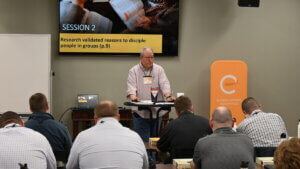What is the habit loop? A habit consists of three parts; a cue, a routine action, and a reward. According to Charles Duhigg in The Power of Habit, the cue is a trigger that tells the brain to go into automatic mode following a learned routine. The routine is a physical, mental, or emotional behavior that follows the cue. The reward is a recurring positive stimulus that tells the brain this routine is good and to be remembered. The next time the cue is introduced, you will follow the same routine desiring a similar reward.
In the first decade and a half of the 20th century good dental hygiene in America was almost non-existent. It is said the greatest detriment of our military in World War I was not the enemy but tooth decay and oral infections. In fact, the federal government declared the deficient state of dental hygiene to be a national security risk.
This began to change when a persistent inventor & salesman convinced Claude Hopkins to invest his outstanding marketing skills behind a product called pepsodent, a paste for brushing teeth for better dental hygiene. Hopkins had been the mastermind behind Quaker Oats and other now famous products such as Goodyear.
Hopkins was perhaps genius at targeting the habit loop of Americans by finding a trigger or cue then introducing them to a new or different routine – using his product and delivering a positive reward. This reward would instruct the brain that this routine was something needed regularly. “Quaker Oatmeal would give 24 hours of energy – if you take a bowl every morning.” People ate it, they felt better, so this became a habit every morning. Sales for Quaker Oats skyrocketed.
His ads for pepsodent asked you to run your tongue across your teeth. “Feel that film? Pepsodent will clean that film and give you whiter teeth.” Other toothpaste manufacturers had tried this same ploy, to no avail. What made the difference? Pepsodent ingredients included a citric acid and other ingredients that left a tingling sensation in the mouth.
This sensation, still to this day, represents in our minds a fresh clean mouth and good dental hygiene. The difference was Hopkins keyed a trigger, rubbing the tongue along the teeth, and a reward at the end of the suggested routine. Other toothpastes left no reward. In less than ten years Americans rose from less than 7% brushing their teeth daily to over 65%. Pepsodent became the number one selling toothpaste for nearly forty years. That’s changing the habit loop.
If you want a more effective life or organization, change the habit loop. Most every action we do daily is based on habit. You do not think of your morning routine; you just do it. You do not look at a map to go to the grocery store, you get in your car and drive. Your day follows a regimen of habits. Why is it when you pass by a familiar bowl of candy that you side step and indulge in a piece or two? It is the habit loop.
Understanding how habits work helps you control certain areas of your life and can assist leaders in affecting the habit loops of their organization. (By the way, I know you brushed your tongue along your upper front teeth as you read that statement above)
George Yates is the Church Health Strategist for the Alabama Baptist State Board of Missions, assisting churches and individuals in pursuing God’s purpose for life. Learn more at ALSBOM.org/revitalization.









 by Dogwood
by Dogwood